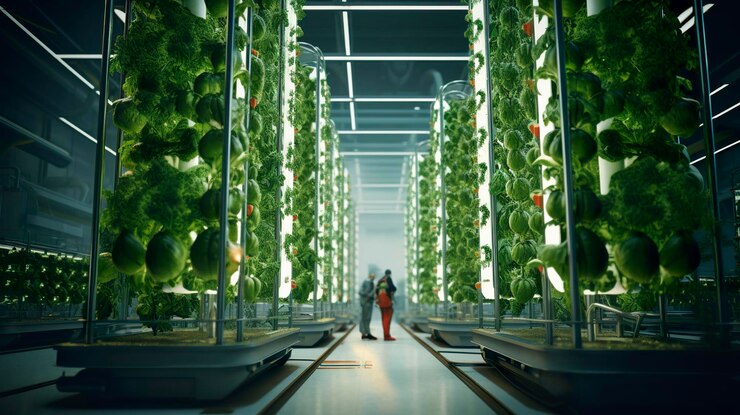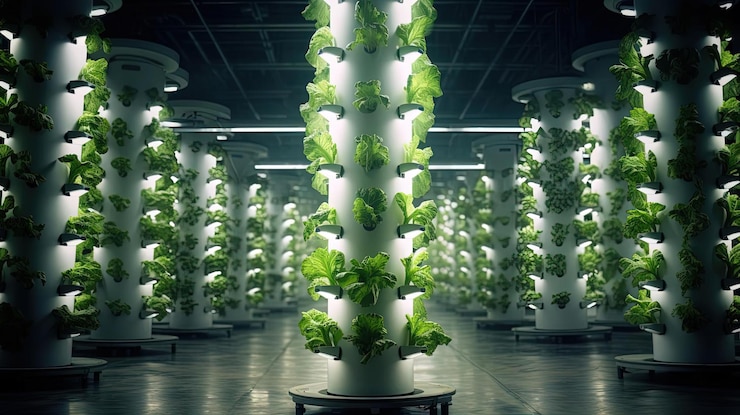Seed germination, the remarkable biological process by which a seed transforms into a nascent plant, is the foundational step for any successful garden. It’s a journey from dormancy to vigorous growth, a testament to nature’s inherent power. For a seed to awaken from its quiescent state, a precise confluence of environmental factors is paramount. A dry seed will perpetually remain a dry seed; it requires the introduction of moisture to rehydrate and initiate the intricate metabolic processes that lead to the emergence of a young seedling. Whether nestled in a traditional soil bed, a sterile rockwool cube, or even a simple moist paper towel, the growing medium’s primary role is to provide consistent hydration. While seeds are remarkably adaptable to various substrates, their demand for unwavering moisture is non-negotiable, requiring the medium to remain consistently moist, 24 hours a day.
The critical phase of rehydration commences when the seed imbibes water, swelling and preparing for the next stage. Optimal temperature also plays a pivotal role, with most seeds germinating successfully within a range of 18 to 27 degrees Celsius (65 to 80 degrees Fahrenheit). Once adequately hydrated and at the right temperature, the dormant plant embryo within the seed springs to life, metabolic activity resumes, and cell division begins in earnest. This leads to the formation of the radicle, the embryonic root, which is the first part to emerge, anchoring the nascent plant and beginning its search for nutrients. Subsequently, the hypocotyl and cotyledons (embryonic leaves) emerge, culminating in the appearance of a young, tender seedling. Essentially, a seed, a living organism in a state of suspended animation, is gently coaxed out of its dormancy through the precise alchemy of germination.
Why Mastering Germination is a Gardener’s Essential Skill
Learning the nuances of seed germination is an invaluable skill for any gardener, offering a multitude of benefits that transcend the simple act of planting. It empowers individuals with greater autonomy and flexibility in their gardening endeavors, allowing for a wider selection of plant varieties and a departure from reliance on external sources.
- Increased Autonomy and Variety: Germinating your own seeds grants you the freedom to cultivate a diverse array of plants, unconstrained by the limited selection often found in pre-grown seedling offerings. This broadens your gardening horizons significantly.
- Cost-Effectiveness: The cost savings associated with germinating your own seeds are substantial. Seedling purchases and subscription services, while convenient, often come with a premium price tag that can quickly accumulate.
- Superior Plant Health: Live seedlings purchased or shipped can frequently arrive in suboptimal condition, often damaged, stunted, or even deceased due to the stresses of transport. This leads to wasted time and effort.
- Efficiency and Timeliness: Seeds can germinate within the same timeframe, or even faster, than it takes to receive a shipment of live seedlings, ensuring a more efficient start to your gardening projects.
Beyond the practical advantages, the act of nurturing a seed from its dormant state to a vibrant young plant provides an immense sense of satisfaction and connection to the natural world. It’s a fundamental skill that, once acquired, serves a gardener for a lifetime, fostering a deeper understanding and appreciation for the life cycle of plants.

Rockwool: The Hydroponic Germination Champion
In soilless growing systems like hydroponics, alternative growing mediums are essential to provide structural support for plant roots and the base of the plant. Among these, rockwool stands out as the most widely adopted and effective medium, particularly for germination. Rockwool cubes, formed from molten rock spun into fine fibers, possess a unique texture reminiscent of wool. The high temperatures involved in their manufacturing process render rockwool a sterile and bacteria-free medium, providing an ideal, clean environment for germinating seeds.
Rockwool’s exceptional properties make it particularly well-suited for the delicate process of seed germination:
- Exceptional Water Retention: The fibrous structure of rockwool is highly adept at retaining water, ensuring consistent and prolonged hydration for germinating seeds. This minimizes the risk of drying out and supports continuous moisture availability.
- Optimal Porosity for Root Development: Despite its water retention capabilities, rockwool’s porous nature prevents over-saturation, allowing for adequate air circulation around the developing roots. This balance of moisture and aeration is crucial for healthy root growth and prevents waterlogging.
- Foolproof for Beginners: The inherent ability of rockwool to both retain and release water makes it remarkably forgiving for novice gardeners, reducing the chances of under-watering or over-watering during the critical germination phase.
- Sterile Growing Environment: The high-heat manufacturing process ensures that rockwool is free from pathogens and pests, providing a clean and safe environment for delicate seedlings.
Step-by-Step Germination in Rockwool for Your Aeroponic Tower Garden
Successfully germinating seeds in rockwool for transfer into an aeroponic tower garden requires careful attention to detail at each stage. This methodical approach ensures optimal conditions for healthy seedling development.
- Preparation of Rockwool: Begin by soaking a sheet of rockwool in de-chlorinated water with a pH between 5.5 and 6.5. Allow the rockwool to soak for approximately 10 minutes, ensuring it absorbs sufficient moisture. Subsequently, remove the rockwool and allow it to drain for another 10 minutes, removing excess water and achieving ideal moisture levels. Place the drained rockwool back into your tray.
- Seed Planting: Carefully drop seeds into the planting hole of each rockwool cube. It is advisable to plant an extra seed or two per cube to increase the likelihood of successful germination. For smaller seeds, a toothpick dipped in water can assist in precise placement. Position each seed about 1/4 inch deep on opposite sides of the hole to provide ample space. After planting, lightly mist the top of the hole with water from a spray bottle.
- Vermiculite Application: Sprinkle vermiculite into the planting holes and on top of the cubes. Vermiculite’s excellent water retention properties help to prevent the seeds from drying out. Avoid compacting the vermiculite; simply sprinkle it loosely. A final misting with a spray bottle will moisten the vermiculite.
- Maintaining Optimal Conditions: Daily monitoring of moisture levels is crucial. Maintain approximately 1/4 inch of pH-balanced water (5.5 – 6.5) at the bottom of the tray; rockwool’s wicking properties will draw water upwards. Continue daily misting of the cubes to maintain surface moisture. Ensure the temperature remains within the optimal germination range of 18 to 27 degrees Celsius (65 to 80 degrees Fahrenheit). The use of a humidity dome can aid in maintaining warmth and humidity, and a heating mat can be beneficial during colder months.
- Introducing Grow Lights: The moment a green sprout is visible, transfer the germinated cube under a germination grow light. Seedlings, like hungry newborns, require immediate access to light for photosynthesis. Position the light approximately 2-3 inches from the top of the seedling, ensuring maximum light exposure without causing burning. Maintain a lighting cycle of 14-16 hours per day until the seedlings are ready for transfer to your aeroponic tower garden. Humidity domes and heating mats should be removed once sprouting occurs. Continue to monitor water levels and mist daily for all cubes.
Addressing Leggy Seedlings: Prevention is Key
“Legginess” in seedlings, characterized by elongated and thin stems, is a common issue almost always caused by insufficient or improper lighting. Freshly sprouted seedlings instinctively stretch towards a light source if it’s too distant or inadequate. High temperatures can also contribute to legginess. If using a humidity dome or heating mat, they should be removed promptly upon sprouting to prevent excessive warmth.
Leggy seedlings become top-heavy and often lean, making them susceptible to damage and hindering proper growth. While some leggy seedlings can be salvaged if addressed quickly by bringing the light source closer (2-3 inches from the top) and removing any heat sources, prevention is the best strategy. In traditional gardening, “potting up” by burying the plant deeper can offer support. However, this is not an option in soilless hydroponic systems. Therefore, the immediate provision of adequate light upon sprouting is paramount for strong, healthy seedling development.
Seamlessly Transferring Seedlings to Your Aeroponic Tower Garden
The transfer of healthy seedlings into your aeroponic tower garden is an exciting milestone, signifying their readiness for independent growth. Several indicators signal that your seedlings are prepared for this transition.
- True Leaf Development: The most reliable indicator is the formation of four leaves. The initial two leaves, known as cotyledons, are embryonic. Wait until two additional “true” leaves emerge below them, bringing the total to four.
- Root Emergence: When roots begin to protrude from the bottom of the rockwool cubes, it’s a clear sign that the seedlings are well-established and ready for transfer.
- Height as a Supporting Indicator: While not a definitive sign on its own, seedlings reaching 1-2 inches in height, coupled with the other indicators, suggest readiness for transplant.
Conclusion
Mastering seed germination is a cornerstone of successful gardening, offering autonomy, cost savings, and the profound satisfaction of nurturing life from its very beginning. Understanding the critical environmental factors—moisture, temperature, and light—is paramount. Utilizing effective growing mediums like rockwool, with its excellent water retention and porous nature, significantly enhances success rates, especially when preparing seedlings for an aeroponic tower garden. By diligently following the step-by-step process of soaking rockwool, planting seeds, applying vermiculite, maintaining optimal conditions, and providing timely lighting, gardeners can cultivate robust seedlings ready for transfer. Vigilance against legginess through proper lighting ensures strong, healthy plant development. The journey from a dormant seed to a thriving plant, particularly within innovative systems like the aeroponic tower garden, is a testament to careful cultivation and an understanding of plant needs. For all your germination needs and to embark on your gardening journey, explore the solutions offered by ALTO Garden.

